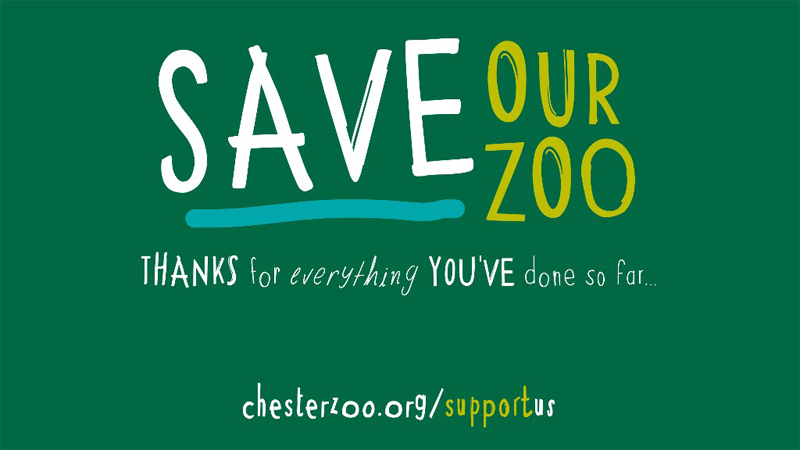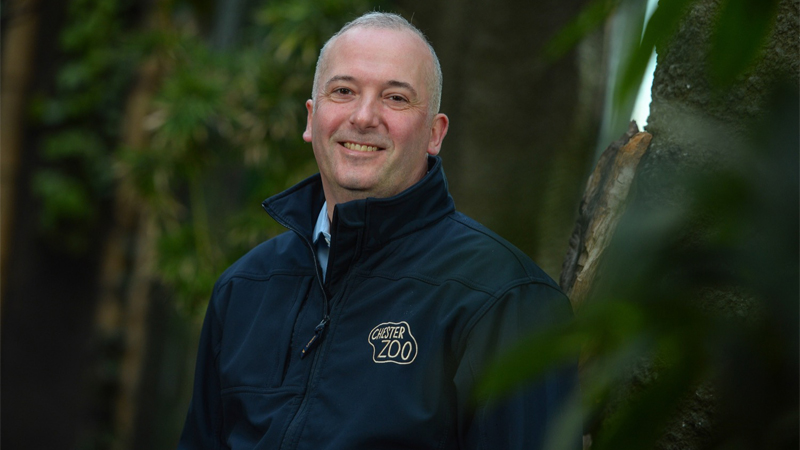|
How do you operate a zoo when your customers aren’t allowed to visit? Chester Zoo MD Jamie Christon tells Planet Attractions how the attraction made it through 2020 and what management’s outlook is for 2021

Tom Anstey | Planet Attractions | 07 Jan 2021

 Chester Zoo is one of Europe’s most popular animal attractions Credit: Clovis Wood Photography on Unsplash Chester Zoo is one of Europe’s most popular animal attractions Credit: Clovis Wood Photography on Unsplash
It’s been a rocky year for zoos and aquariums, with the Coronavirus pandemic drastically affecting the bottom line of animal attractions. For Chester Zoo - one of Europe’s highest attended zoos and the highest attended zoo in the UK - the impact has been severe.
Normally welcoming more than two million visitors each year, lockdowns and government restrictions have drastically reduced attendance at the zoo, which in turn has had a huge impact on its finances.
Unlike some attractions, which have completely closed until visitors can return, cutting costs with complete closure isn’t an option for zoos or aquariums, as they have thousands of animals that need daily feeding and often round-the-clock care.
“Following the first UK lockdown, we were closed for three months,” says Jamie Christon, Chester Zoo’s managing director, speaking to Planet Attractions.
“We eventually won a battle with the government to reopen but we’ve been running on limited capacity ever since.”

Credit: Chester Zoo
Save Our Zoo
The zoo operates as a charity, with 97% of its income coming from its visitors. Without that income and with operating costs at around £1.6m (US$2.2m, €1.8m) per calendar month, life has become tough.
“Half our operating cost goes purely on feeding the animals,” says Christon.
“Our model relies on admissions to keep us going and without those admissions, we’re going to start to struggle.”
The British government did introduce a £100m (US$136m, €110.4m) fund designed to support animal attractions, but the criteria are stringent, which makes securing finances a difficult challenge.
“You have to have less than three months operating income left in the bank before they will even talk to you about funding,” Christon explains. “For a zoo, if you get to a point where you only have three months of operating costs left, you would already be closed and in the process of finding new homes for your animals. The fund isn’t really suitable for its purpose.”
When management realised Chester Zoo was going to be closed for an extended period, they launched the Save Our Zoo campaign, primarily off of the back of the attraction’s social media channels.
“We were astounded by the amount of money that came in - within two weeks, we had raised more than £4m (US$5.4m, €4.4m)” says Christon.
“That raised our political profile, which meant that we had a lot of cross-party support from MPs and were brought up for debate in the House of Commons.
The people really saved us and it’s people power that got the zoo open again. That money has been used in its entirety to keep us afloat during this period.”
Even with astounding public support, financial struggle still exists for the zoo, which is operating at a huge loss.
“Even when we’re open, the zoo can only operate at 50% capacity, which means that only half of our usual income is coming in,” says Christon.
“We’ve got a £5.5m (US$7.5m, €6m) deficit in the zoo’s finances for 2020. We’re making an assumption that all of this year, we’ll have to operate under limited capacity and social distancing guidelines, so we won’t be able to make that up in 2021 either.”

Jamie Christon is managing director of Chester Zoo - Credit: Chester Zoo
Changing the model
With huge challenges in terms of operation and throughput, zoo management had to come up with a new business model that could accommodate guests during the pandemic era.
Among the changes, during the summer months, all visitors - including Chester Zoo’s 123,000 members - had to book a visit online, with no walk-up visitors allowed.
Capacity also had to be managed differently in order to accommodate social distancing rules and other COVID guidelines, as well as knowing who is at the zoo and when, to manage any potential virus outbreaks.
A welcome team was also created and tasked with making sure that visitors and staff were following the government guidelines, also offering reassurance to people that, in some cases, were coming out for the first time in months.
When the zoo initially reopened, its indoor spaces all remained closed. As the summer went on, it was able to reopen its indoor attractions, shops and restaurants, all of them operating under COVID-safe guidelines.
One of the biggest challenges during this period of forced transition was the number of staff available.
“In a normal summer we would hire 450-500 seasonal staff,” explains Christon. “When we reopened, we had none. We were managing the zoo with half the workforce we would usually have, which meant many people were having to do two jobs or had to be very flexible with the ways they were working.”
For both staff and visitors, the UK’s Coronavirus tier system also provided new challenges.
“We’re positioned in the middle of Liverpool, Manchester and the Welsh border, all of which were in the higher tiers at various points during the year,” says Christon.
“This led to a lot of requests for what visitors could and couldn’t do, unsure of what the government guidance meant.
We also have staff living in different tiered areas and we’re trying to find a model that can cater to all of those people.”
In addition to these lower staff numbers, for those not furloughed, the working day and the type of work being done has changed significantly for some.
“Myself and our CEO Mark Pilgrim have been splitting our time between home working and the zoo,” says Christon. “We don’t see each other in person in case one of us contracts COVID and the other is forced to self-isolate.
We’re having a lot more virtual meetings and a lot more keeping close with what’s going on in the news and reacting quickly to that.
Working hours and the type of work we’re doing has changed as well. We’ve had more focus on the operational side of things and there’s been less long-term planning. It’s pretty difficult trying to work that out at the moment. There’s a lot of firefighting and considering how the government rule changes will affect us. We’ve also been working on bigger picture stuff with the British and Irish Association of Zoos and Aquariums (BIAZA), to consider how we’re lobbying the government to save zoos and aquariums that are in difficulty during this period.”
One thing that hasn’t changed is the role of the zoo’s keepers, who are operating as though it's business as usual - albeit with social distancing guidelines in place where possible.
“Even when shut, the zoo operates in its normal way in terms of animal care,” Christon says. “For the keepers, there hasn’t been much change.
And what about for the animals?
“We get asked a lot if the animals change when the visitors aren’t around and yes, some do change as they can be very social. The primates for example enjoy watching and interacting with the public.
For the majority though, life goes on as normal. The zoo has been a very odd place to be over the last year. We were very happy to see the visitors come back in June.”
Positive outcomes
While the global crisis has caused much upheaval for not only Chester Zoo but businesses across the world, there have been some positives to come out of the situation.
“A big positive for us is the virtual zoo sessions,” said Christon. “We had some virtual tours of the zoo through our social media channels every Friday, which allowed our members to see the keepers at work while the zoo was closed. We realised they were very popular with the public, so we definitely want to do more of those.
From an environmental perspective, COVID has allowed Mother Nature to take a breather. For our conservation projects, that’s fantastic and we’re getting reports of animals and plants thriving in their natural habitats all around the world as a result of reduced pollution and population movement.
The link to that is a realisation that you don’t have to travel as much as you did before. I used to travel down to London quite regularly for face-to-face meetings, which obviously are quite important, but virtual meetings can fill that gap. That’s good for the environment and good for our finances.
The other thing is realising the loyalty of our members, who stuck with us through thick and thin and helped us keep going through lockdown. It’s brought home how important they are to us as an organisation.”

Monsoon Forest reopened in November following a major fire in 2018 - Credit: Chester Zoo
The show must go on
While Chester Zoo has spent much of the year in lockdown, development work on various projects has continued behind the scenes.
Offering a ray of hope in a time when the outlook is rather bleak, in November the zoo was able to reopen the Moonson Forest - part of the £40m (US$54.4m, €44.2m) Islands development - following a massive fire in December 2018 that almost completely destroyed the new building.
The rebuilt Monsoon Forest area now hosts 33 animal species, including Sumatran orangutans, rhinoceros hornbills and tentacled snakes - a reptile that cannot be seen anywhere else in the UK. More than 2,600 new plants and trees have been planted, while all the soil and subsoil had to be replaced along with the roof.
Opening in March is the new Latin American Wetland Aviary, an interactive walkthrough habitat which will allow visitors to get up close and personal with some South and Central America’s most spectacular species of bird.
The zoo will also debut a new exhibition in the summer, which will focus on sustainability.
Locked down again
On January 4, the UK entered its third national lockdown, which as a result means Chester Zoo must close once again.
The charity has vowed that its animals will “always be expertly cared for by our fabulous keepers, no matter what” but has asked the public for further help.
"This is not the way that any of us wanted to welcome in the new year but it’s something we must do,” said a zoo statement.
"Visitor income is our lifeblood and facing another extended period without it, coupled with the uncertainty attached to this pandemic, is a big worry.
This is particularly the case given there is still no tailored-government support funding for large charity zoos like ours.”
In the face of further disappointment, Christon offers a message of hope and positivity: “At the moment we’re watching the news and seeing how things are changing on a daily basis.
We’ve done well over the last few years pre-COVID. We know we’re strong and resilient and can fight back. We hope we can do a lot better in 2021.
We want to encourage people to come to zoos and aquariums to see the good work that they do in trying to preserve the natural environment.
It’s a hopeful message going forward. We’re optimistic and we’re doing things in a controlled manner so that if something doesn’t happen we can move it to another date. We’re always making sure that we’re COVID-safe for everything that we’re doing at the zoo.”
Animal attractions
|
|






Supplier Showcase 2025: The biggest attractions projects landing worldwide this year
|